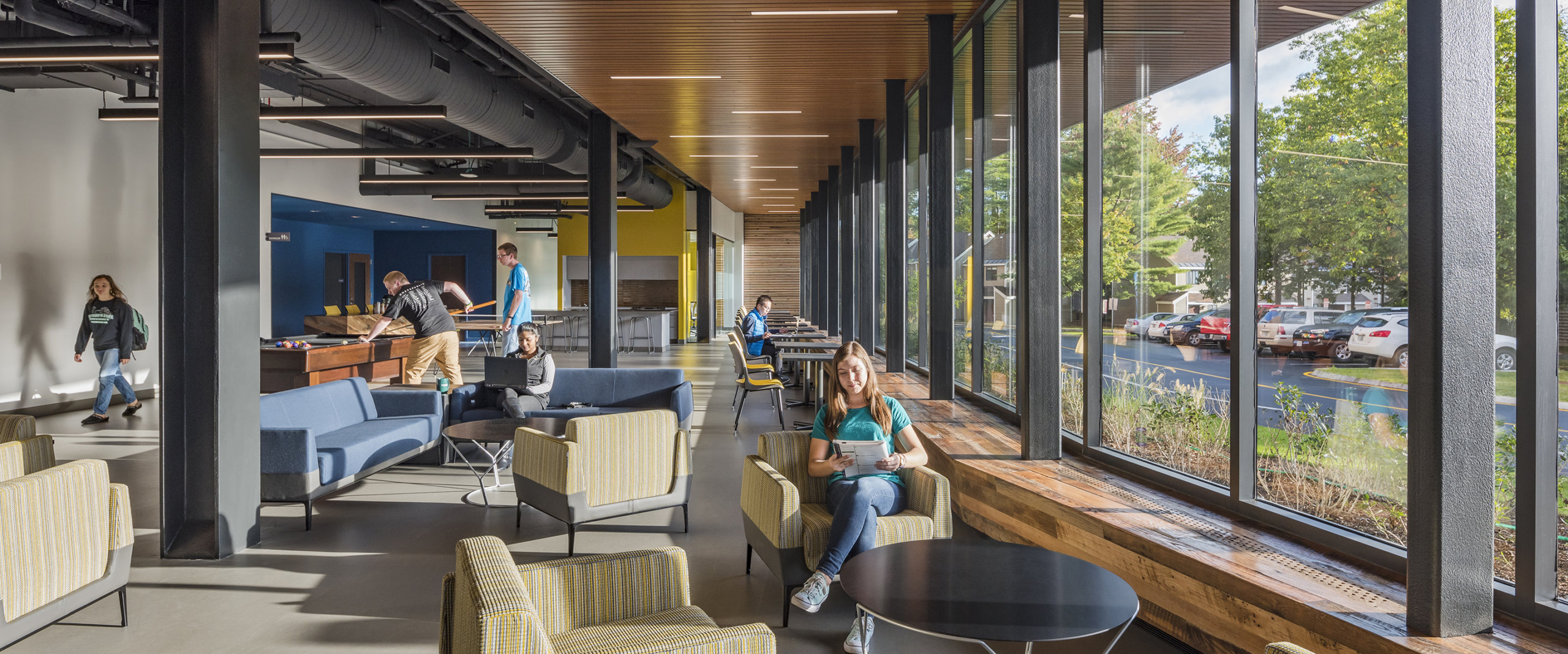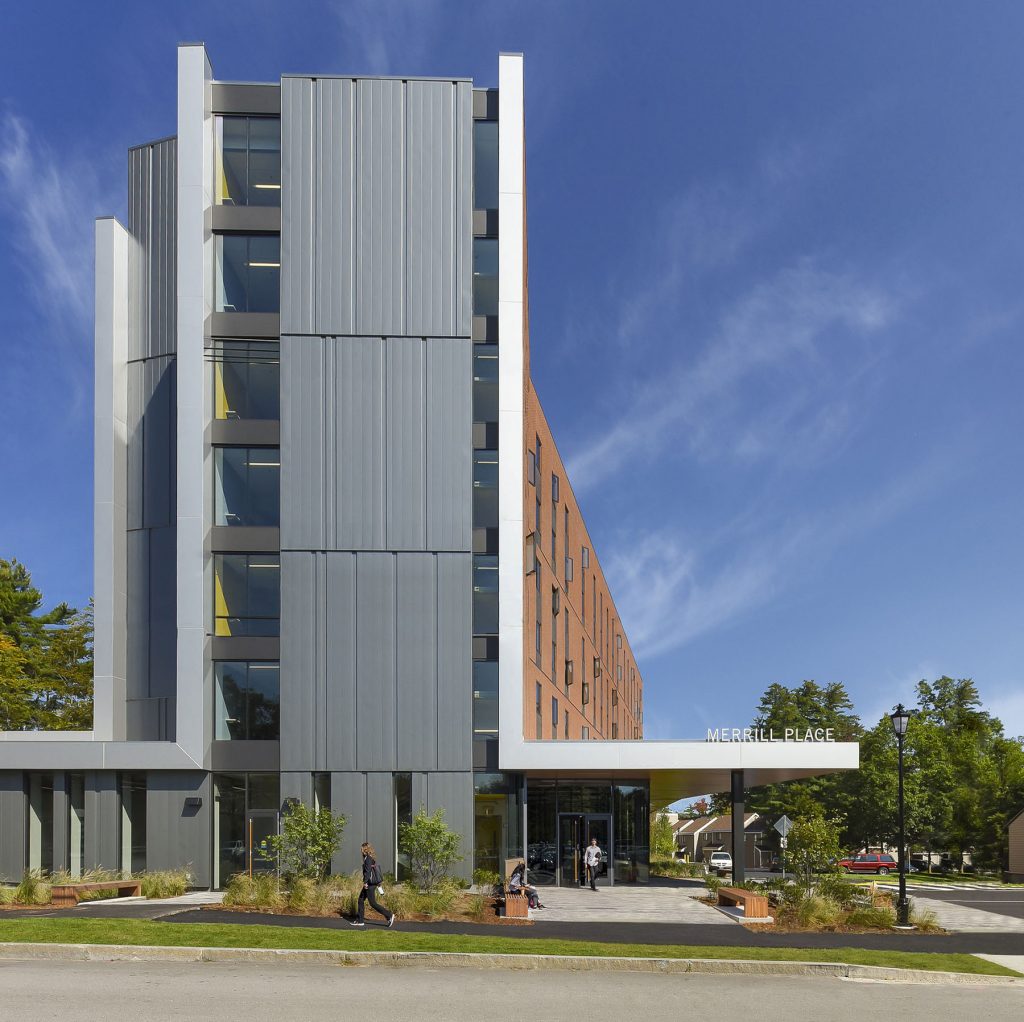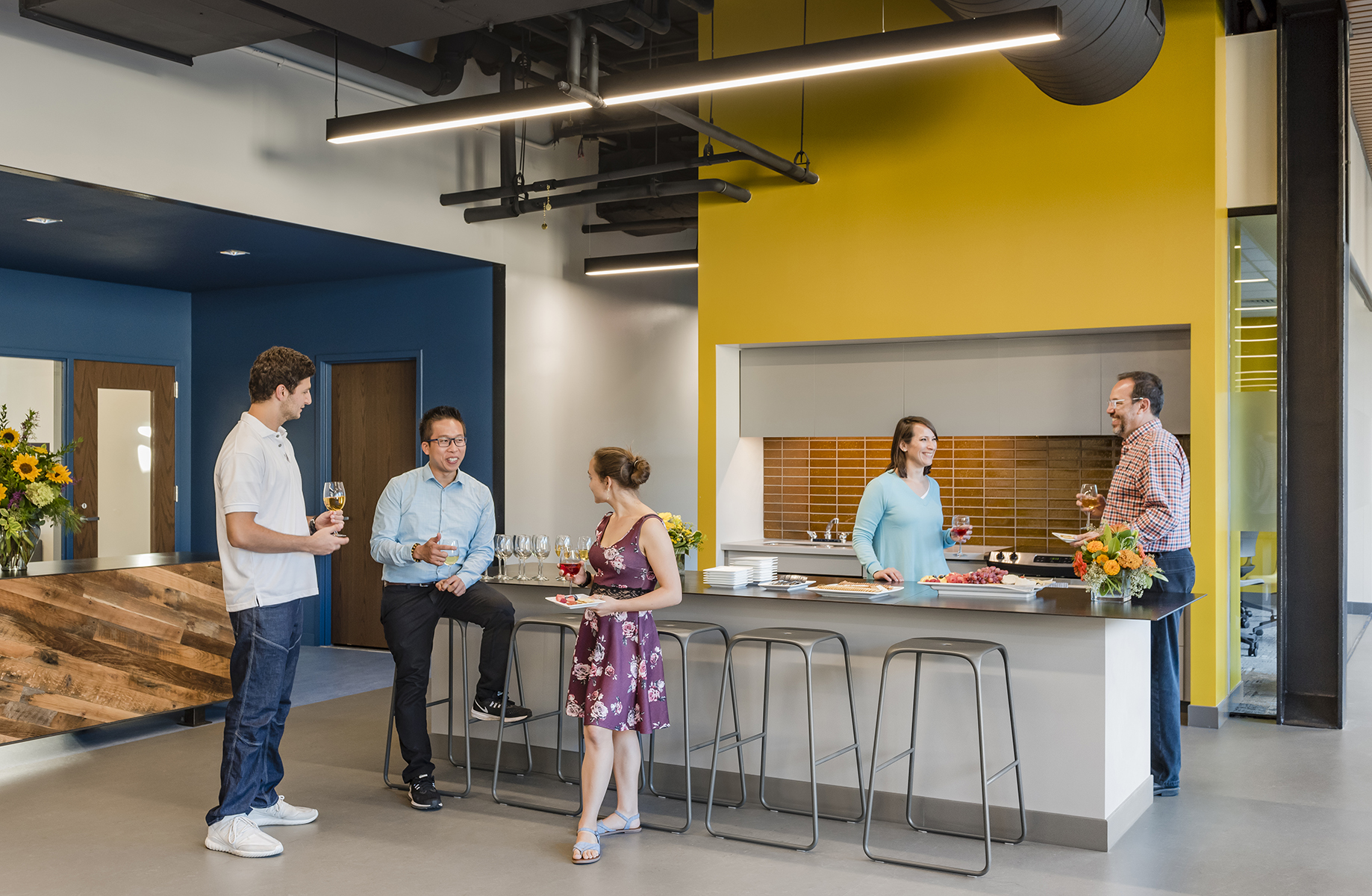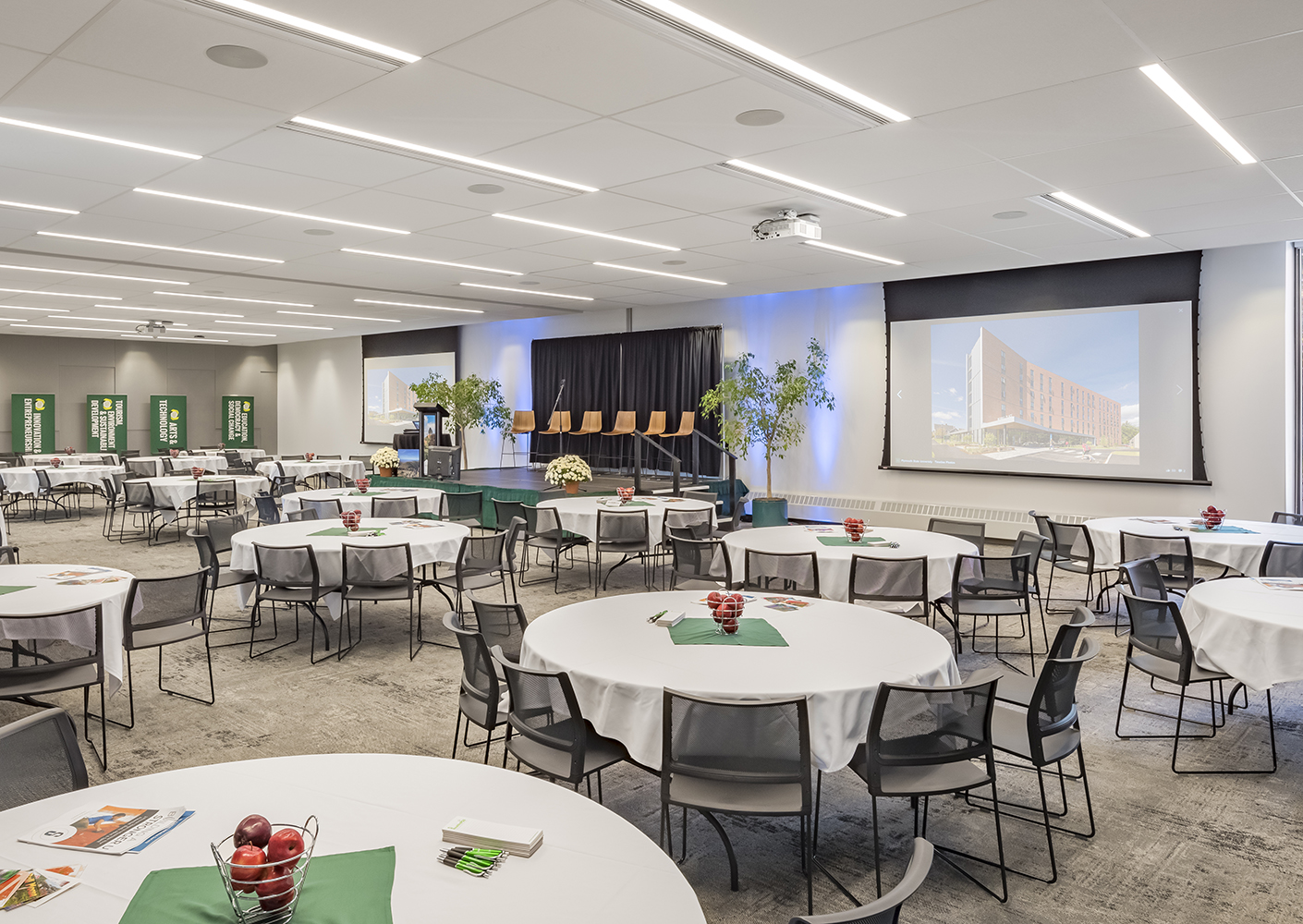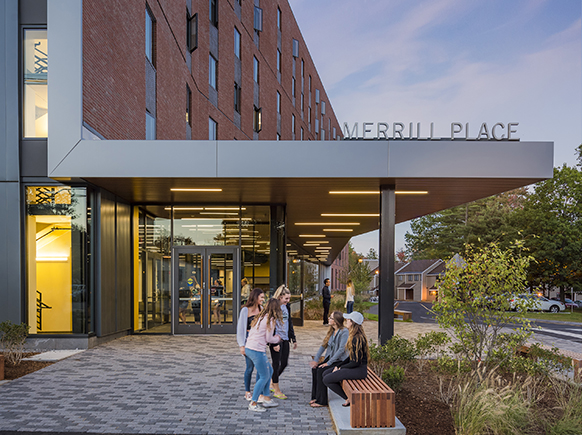When university students have left for the summer and classes dwindle, generating sufficient revenue from residence halls can be a real challenge. Success seems to hinge on finding a use that is sufficiently compelling. At New Hampshire’s Plymouth State University, where we designed a new residence hall, we folded in something special: a hotel and conference center.
Many universities use residence halls for summer camps or conferences, but rarely for individual stays. Merrill Place was designed to optimize the experience for every use, so that residence hall bedrooms can be rented not only as part of a conference package but to individuals visiting the area.
Given the relative novelty of this space type, our design grew out of a particularly rigorous research process. We asked ourselves, what are the financial, operational, and design requirements to make the “flip” successful? How do average occupancy and the building’s capacity affect the calculations on financial return? What amenities and room types work best? How can the look and feel of hotel-level hospitality be compatible with the durability required of a residence hall? And especially, what are the business competitors in the area?
A market analysis looked at other hospitality venues nearby and evaluated gaps in service. In the town of Plymouth, there was just one conference center with a 330-person, ballroom-style capacity and a handful of hotels serving a wide area. Plymouth State University saw an opportunity to provide a conferencing center that could draw business from the university, the town, and the region. Given Plymouth’s location in the heart of central New Hampshire, it’s a pretty great hub for tourists. It’s near the Appalachian Trail and offers fantastic hiking, rock climbing and cycling opportunities. With its natural beauty and optimal location, likely guests could be nature lovers, people looking for a weekend getaway, and anyone associated with the area’s many university-affiliated events, summer camps and professional development conferences.
